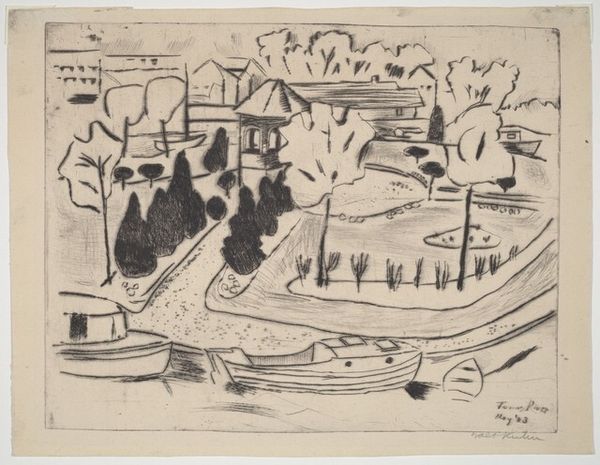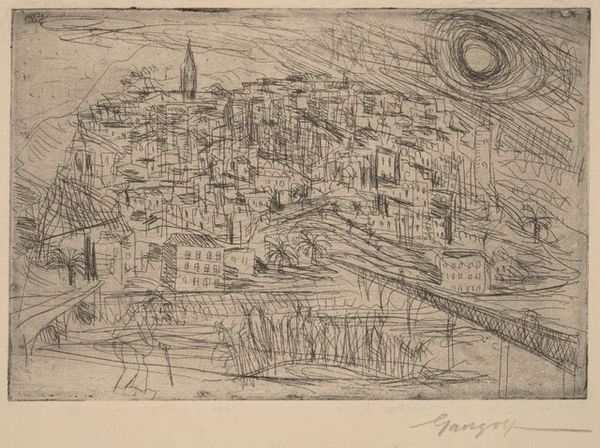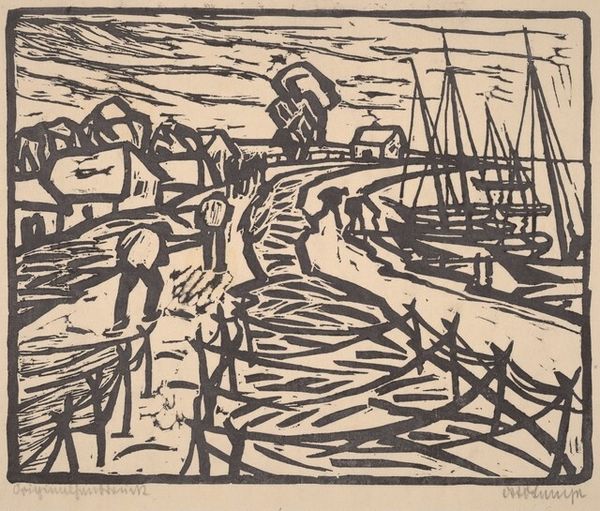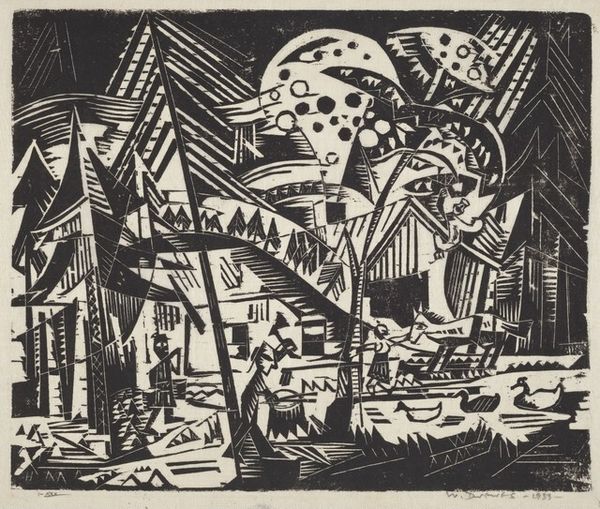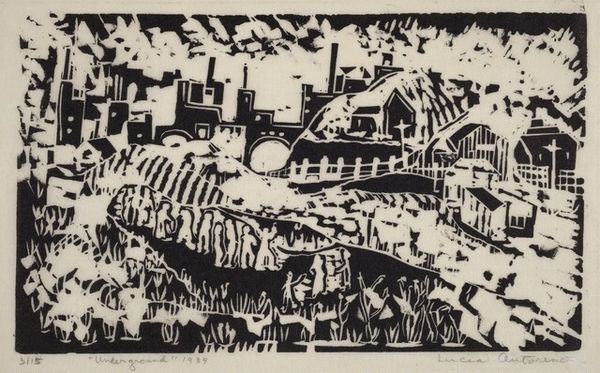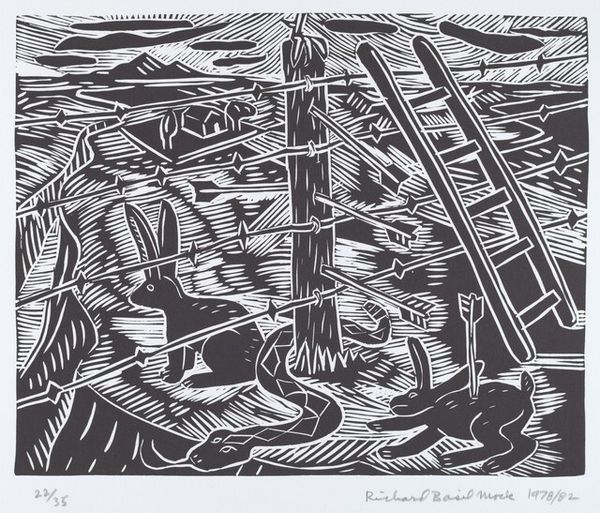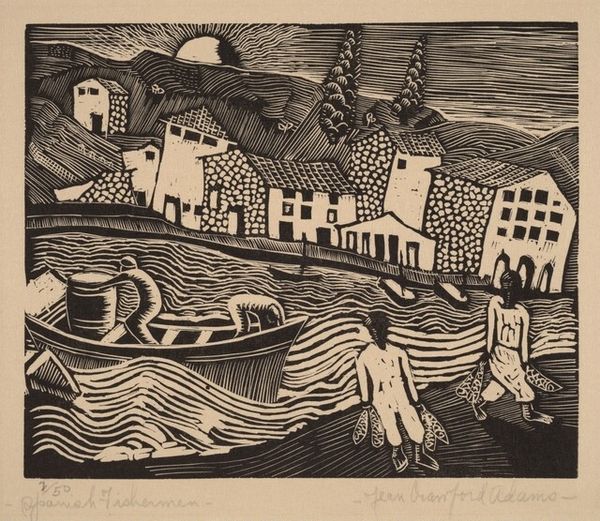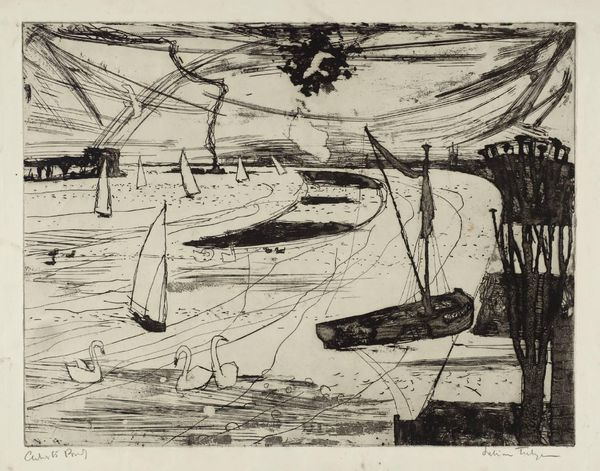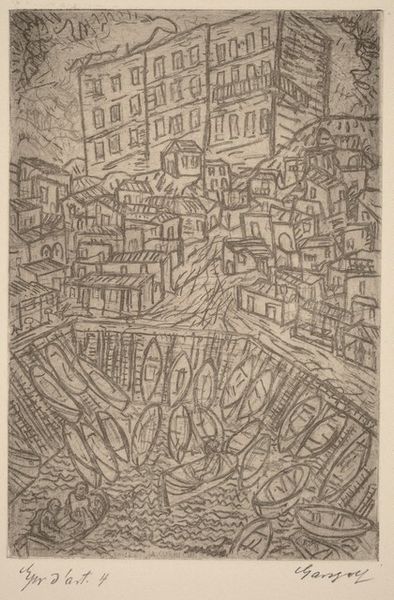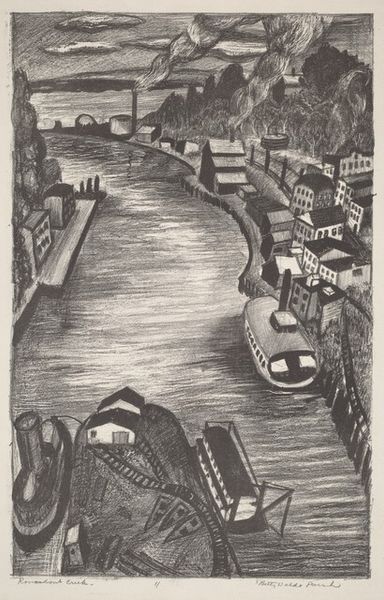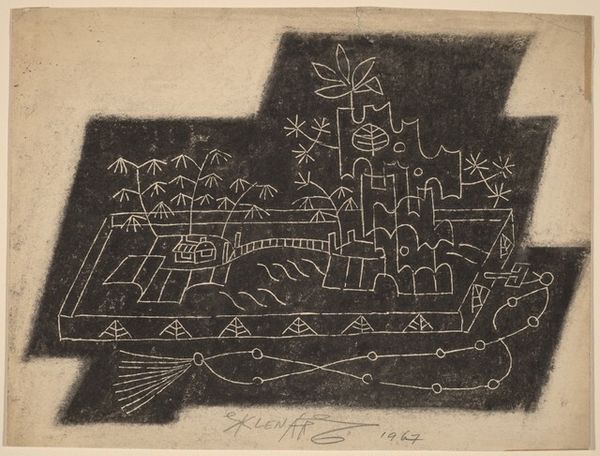
Marseille, Steamship in the Harbor (Marseille, Dampfer im Hafen) 1900 - 1945
0:00
0:00
print, woodcut
# print
#
figuration
#
expressionism
#
woodcut
#
line
#
cityscape
Dimensions: plate: 12.3 × 15.3 cm (4 13/16 × 6 in.) sheet: 40.7 × 31 cm (16 × 12 3/16 in.)
Copyright: National Gallery of Art: CC0 1.0
Curator: Welcome. We're standing before Paul Gangolf’s woodcut, "Marseille, Steamship in the Harbor," created sometime between 1900 and 1945. Editor: Immediately, I'm struck by this pervasive feeling of anxious energy! It’s as if the whole scene is vibrating. What do you think lends to this? Curator: Well, this piece utilizes the stark contrasts and rough, almost frantic, lines characteristic of Expressionist woodcuts. It invites us to consider the process itself; the artist's hand forcefully carving into the wood, physically shaping this scene of maritime industry. Notice how the dense lines articulate every form. It suggests relentless labor, wouldn't you agree? Editor: Absolutely! And the steamship itself becomes almost monstrous. This bold composition—all sharp angles and distorted forms—emphasizes the overwhelming nature of industrial progress, perhaps even anxieties surrounding the speed of modernity? Even in the two small figures in rowboats, one looks away from us; these anonymous working men dwarfed by the chaotic scale of the harbor around them! Curator: Indeed. The very act of creating this print is labor intensive, the design deeply interwoven with social realities of labor, resource, extraction, and production… Gangolf seems aware of this intrinsic relationship. Editor: The repetition of motifs throughout; lines imitating waves, ropes, wood planks—it echoes the rhythmic movements and raw energy inherent to port cities like Marseille. It also feels imbued with maritime symbology like travel and industry. What about Gangolf himself—his story might inform the artwork, don't you think? Curator: That is true. His biography could explain why he decided to portray this harbor specifically or work during that time. What matters to me is that this process of creating woodcuts itself demanded both artistic vision, manual expertise and physical effort. We see that visual information in Gangolf’s artwork. Editor: I appreciate the social history imbedded within his methodology here. Gangolf manages to embed human feeling into inanimate matter! It gives a palpable weight. I see these expressionistic and almost anxious sensibilities when observing the composition of materials. The rough, fragmented linework suggests unrest. Thank you, that truly enriched the reading of symbols and how their significance has traveled with and endured to this day. Curator: A real intersection, where the medium deeply informs the message and it endures. Let’s proceed to our next artwork.
Comments
No comments
Be the first to comment and join the conversation on the ultimate creative platform.
